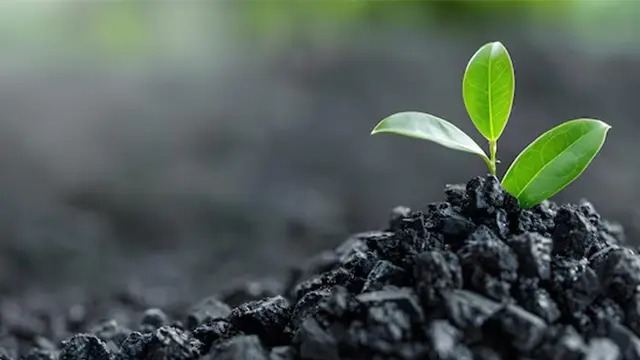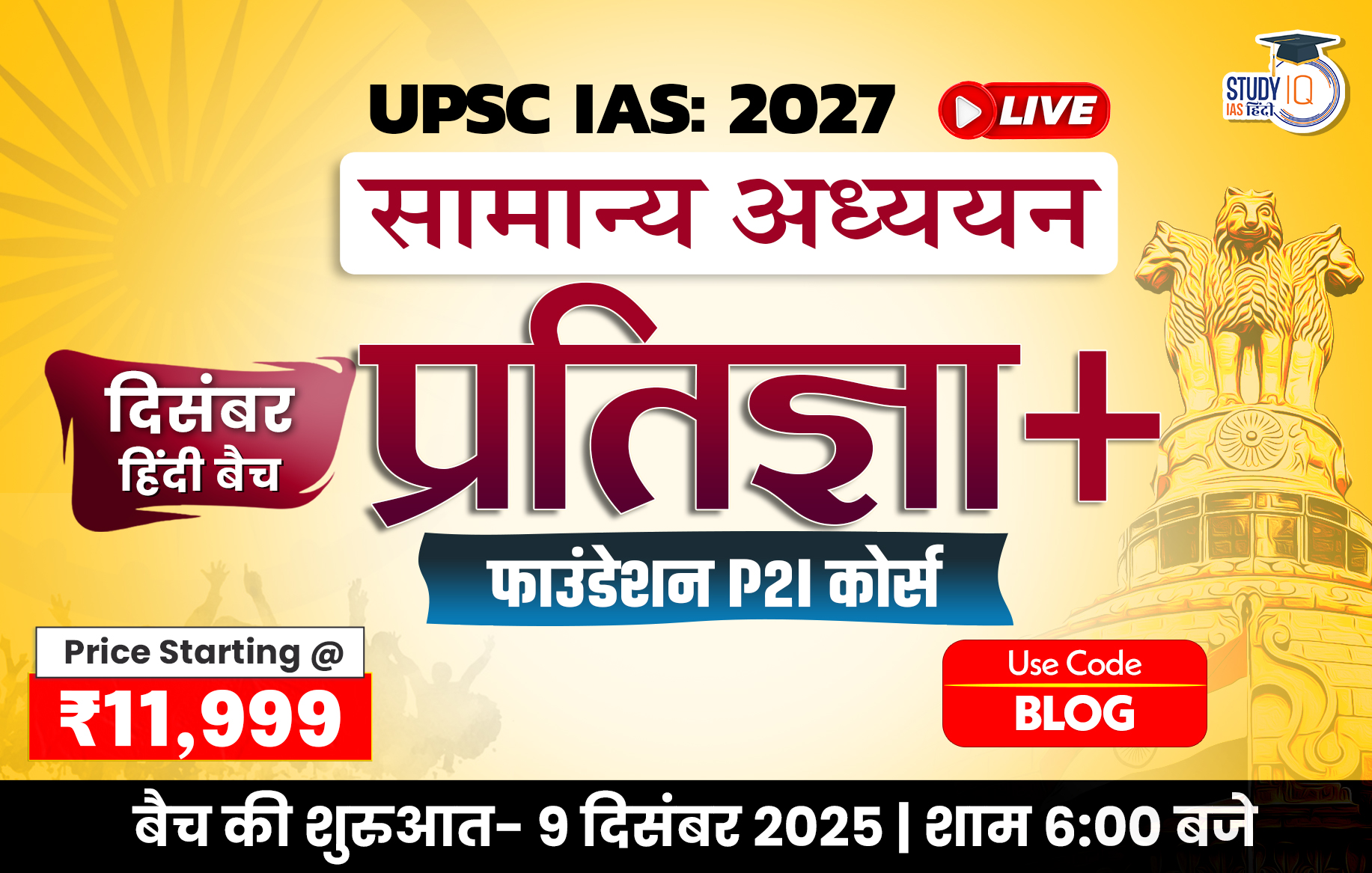Table of Contents
Context
With the Indian carbon market set to be launched in 2026, CO2 removal technologies such as biochar are expected to play a crucial role.
What is Biochar?
- Biochar is a carbon-rich form of charcoal made by heating agricultural residues and organic municipal solid waste in a low-oxygen environment (a process called pyrolysis).
- It is stable and long-lasting, allowing it to store carbon in soils for centuries.
- It serves multiple purposes: managing waste sustainably, improving soil quality, reducing emissions, and generating energy.
What is Biochar’s Potential?
- Waste Availability: India produces:
- 600+ million tonnes of agricultural residue/year.
- 60+ million tonnes of municipal solid waste/year.
- Production Potential: Using 30–50% of surplus waste could yield 15–26 million tonnes of biochar annually.
- This can remove ~0.1 gigatonnes of CO₂-equivalent emissions per year.
- Byproducts of Biochar Production:
- Syngas (20–30 million tonnes) → ~8–13 TWh electricity → replace 0.4–0.7 million tonnes of coal.
- Bio-oil (24–40 million tonnes) → offset 8% of India’s diesel/kerosene → reduce >2% of fossil-fuel-based emissions.
How is Biochar Helpful as a Carbon Sink?
- Long-Term Carbon Storage: Biochar remains in soil for 100–1,000 years, acting as a stable carbon sink.
- In Agriculture:
- Improves soil water retention and fertility.
- Reduces nitrous oxide emissions by 30–50% (N₂O is 273x more potent than CO₂).
- Enhances soil organic carbon, helping restore degraded land.
- In Industry (Carbon Capture):
- Modified biochar can adsorb CO₂ from industrial emissions.
- Currently less efficient than conventional carbon capture methods, but has future potential.
- In Construction: Adding 2–5% biochar to concrete:
- Improves strength and heat resistance.
- Captures 115 kg CO₂ per cubic metre of concrete.
- In Wastewater Treatment: Can treat 200–500 litres of wastewater per kg of biochar.
- Demand potential: 5–6.3 million tonnes to treat India’s untreated wastewater.
What Are the Challenges in Biochar Application?
- Lack of Market Standards: No standardised feedstock markets or carbon accounting protocols.
- Low Awareness & Weak Policy Integration: Limited knowledge among stakeholders.
- Not fully integrated into climate or agricultural policy frameworks.
- Technology & Resource Gaps: Evolving pyrolysis technologies.
- Limited funding for R&D and infrastructure.
- No Proven Business Models: Uncertainty deters private investment and large-scale deployment.
- Insufficient MRV (Monitoring, Reporting, Verification): Makes it difficult to register biochar projects for carbon credits.
What Needs to Be Done?
- Policy Recognition: Recognise biochar as a verifiable carbon removal method under India’s carbon market.
- Support R&D: Develop region-specific feedstock standards and optimise biomass use by agro-climatic zone.
- Integrate with Government Programs: Align with:
- Crop residue management
- Bioenergy schemes
- State Action Plans on Climate Change (SAPCCs)
- Build Village-Level Infrastructure: Deploy pyrolysis units in rural areas → Create ~5.2 lakh rural jobs.
- Strengthen Market and Carbon Credit Systems: Enable carbon financing to reward carbon removal.
- Improve MRV frameworks to boost transparency and investor trust.
- Promote Multi-Sector Adoption:
- Agriculture: Better soil health, +10–25% yield, –10–20% fertiliser use.
- Energy: Clean fuels (syngas/bio-oil).
- Construction & Wastewater sectors: Scalable carbon sinks and treatment solutions.


 India’s New Earthquake Design Code 202...
India’s New Earthquake Design Code 202...
 SoLAR Phase II Launched 2025: India, Ban...
SoLAR Phase II Launched 2025: India, Ban...
 Asia Power Index 2025: India Secures 3rd...
Asia Power Index 2025: India Secures 3rd...

























